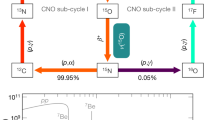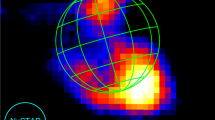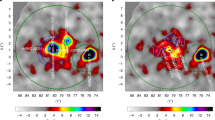Abstract
IN a previous communication1, we reported our measurements on the absorption at 3,500 m. above sea-level of star-producing radiation in lead and in other materials. The data from the absorption in lead, which were the most abundant of all, pointed to the existence of a transition effect with a maximum at about 20 gm./cm.2. As this result, of particular interest in discussing the origin of the stars, was not in agreement with the results of other workers2, we carried out some new observations so as to obtain better statistical data. Though our data are not yet completely collected, we can now affirm that the transition effect in lead really exists ; and we wish to point out its particular property, namely, that it is produced almost entirely by the three-prong stars. This result is in agreement with some orientation measurements made by Amaldi and co-workers3 with fast ionization chambers.
This is a preview of subscription content, access via your institution
Access options
Subscribe to this journal
Receive 51 print issues and online access
$199.00 per year
only $3.90 per issue
Buy this article
- Purchase on Springer Link
- Instant access to full article PDF
Prices may be subject to local taxes which are calculated during checkout
Similar content being viewed by others
References
Bernardini, G., Cortini, G., and Manfredini, A., Nuovo Cimento, 5, 511 (1948); Phys. Rev., 74, 845 (1948).
George, E. P., and Jason, A. C., private communication.
private communication.
Author information
Authors and Affiliations
Rights and permissions
About this article
Cite this article
CORTINI, G., MANFREDINI, A. Transition Effect in Lead of Star-Producing Radiation. Nature 163, 991–992 (1949). https://doi.org/10.1038/163991a0
Issue Date:
DOI: https://doi.org/10.1038/163991a0
This article is cited by
-
Stelle di disintegrazione nucleare in emulsioni fotografiche
Il Nuovo Cimento (1950)
-
On nuclear evaporation in cosmic rays
Il Nuovo Cimento (1949)
Comments
By submitting a comment you agree to abide by our Terms and Community Guidelines. If you find something abusive or that does not comply with our terms or guidelines please flag it as inappropriate.



